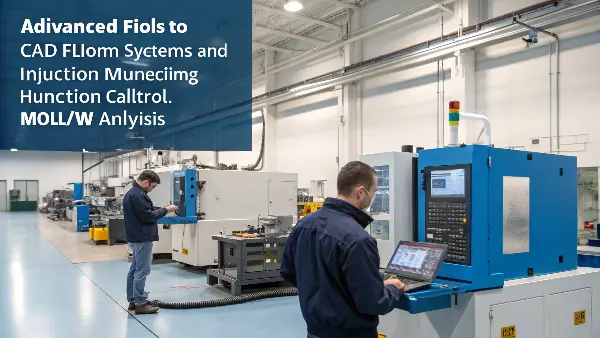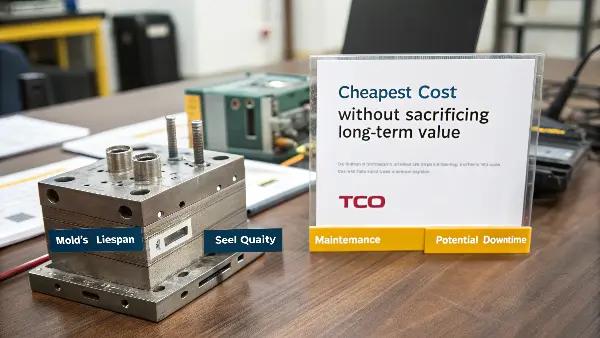Choosing the wrong injection molding partner can derail your entire project with costly delays, poor quality, and budget overruns. The pressure mounts as you face angry stakeholders and a failing product launch. A clear framework is needed to confidently select a partner who delivers every time.
To select the right injection molding partner, you must systematically evaluate their technical capabilities, quality control processes, communication style, and overall reliability. A thorough assessment involves checking their equipment, reviewing case studies, and understanding their project management approach. This ensures they can meet your specific project requirements, from material selection to final production tolerances, safeguarding your investment and timeline.

I’ve been in this industry for over two decades, and I’ve seen great projects collapse because of a poor supplier choice. It’s a costly mistake, and one that project managers like you are right to worry about. The success of your product often hinges on this single decision. So, how do you avoid the pitfalls? It starts with asking the right questions and knowing what to look for beneath the surface. Let’s break down the essential areas you need to investigate to make a choice you won’t regret.
What Core Technical Capabilities Should You Prioritize?
A supplier’s sales pitch always sounds impressive, but you worry their workshop can’t actually handle your project’s complexity. This mismatch often leads to poor part quality, mold failures, and expensive rework. Suddenly, your project timeline and budget are in serious jeopardy.
You must prioritize a partner’s expertise in your specific material and part complexity. Evaluate their mold design software (CAD/CAM), their use of mold flow analysis, and the precision of their manufacturing machines like CNC and EDM. Also, check their range of injection molding presses to ensure they can handle your required part size and production volume. These capabilities are the foundation of a successful manufacturing outcome.

A partner’s technical skill is the bedrock of your project. Without it, nothing else matters. I always start my evaluation here. One of the first things I ask about is their approach to Design for Manufacturability (DFM). A good partner doesn’t just take your CAD file and start cutting steel. They analyze it, provide feedback, and help you optimize the design for molding. This prevents issues like sink marks, warp, and weak weld lines. They should be using sophisticated mold flow analysis software to simulate the injection process. I remember a project involving a complex housing where the initial design would have trapped air, creating a weak spot. Our partner’s mold flow analysis caught it, we adjusted the gate location, and the final parts were perfect.
Beyond the design phase, you need to look at their hardware. What kind of machines are they running? For a high-precision mold, you want to see them using modern 5-axis CNC machines, not just older 3-axis ones. Ask about their EDM (Electrical Discharge Machining) capabilities for creating fine details. The equipment tells a story about their commitment to quality and precision.
Here’s a quick reference for what to look for:
| Technical Area | Green Flag (Good Partner) | Red Flag (Bad Partner) |
|---|---|---|
| Design/Analysis | Provides detailed DFM report; runs Moldflow analysis | Accepts any design without feedback; no analysis tools |
| Mold Making | Modern CNC, EDM, and grinding machines; well-kept shop | Old, poorly maintained equipment; chaotic workshop |
| Material Expertise | Deep knowledge of various resins, including your specific one | Limited material experience; "we can probably run it" |
| Molding Presses | Wide range of tonnages; clean, modern machines | Limited press sizes; old, leaky equipment |
How Can You Effectively Assess Their Quality Control Systems?
You approve the first samples and place a large order. But when the first production batch arrives, you discover many parts are out of spec, causing major shutdowns on your assembly line. The supplier blames a minor issue, but the financial damage is already done.
To effectively assess a partner’s quality control, ask for their quality manual and certifications, such as ISO 9001. You must verify their full inspection process, from incoming raw materials to First Article Inspection (FAI) reports and in-process checks. Look for advanced metrology equipment like CMMs and optical scanners. A robust QC system is about preventing defects, not just catching them.

Quality should never be an afterthought. It must be built into every step of the process. When I’m vetting a new potential partner, I treat their quality system like a top priority. A certification like ISO 9001 is a good starting point. It tells me they have a documented, repeatable system in place. But I don’t stop there. I want to see that system in action. I ask to see their quality control lab. What kind of equipment do they have? You can’t verify a tight tolerance of +/- 0.05mm with a pair of manual calipers. They need to have the right tools for the job, like a Coordinate Measuring Machine (CMM) or a high-resolution optical scanner.
I always ask for sample documentation. Can they show me a sample First Article Inspection (FAI) report? This detailed report measures every single dimension on a part from the first production run and compares it against your drawing. A thorough FAI is a sign of a diligent partner. A few years ago, a partner’s FAI report on a new connector part showed a critical dimension was at the very edge of its tolerance. Even though it was technically "in spec," they flagged it for us. We realized a slight design tweak would center that dimension perfectly, improving the long-term reliability of the assembly. That proactive approach saved us from potential field failures down the road. That’s the difference between a simple supplier and a true partner.
Key Quality Process Checkpoints
- Incoming Material Inspection: Do they test raw materials to ensure they are the correct grade and not contaminated?
- In-Process Control: How do they monitor the molding process? They should be tracking key parameters like temperature, pressure, and cycle time for every run.
- Final Inspection: What is their process for final, pre-shipment inspection? Do they use statistical sampling (AQL) or 100% inspection for critical features?
Why Is Clear Communication and Project Management So Critical?
Your new mold is in production, but the supplier goes silent for weeks. You have no idea about the project’s status, and you can’t give your boss or your team any updates. Deadlines are approaching fast, and you start to feel completely powerless.
Clear communication is critical because it prevents misunderstandings, manages expectations, and keeps your project on track. A dedicated point of contact who provides regular, transparent updates is non-negotiable. Strong project management ensures that timelines, design changes, and key milestones are handled systematically, preventing small issues from escalating into major project delays.

You can have a partner with the best machines and the tightest quality control, but if you can’t communicate with them effectively, the project is doomed. This is the human element, and it’s just as important as the technical side. Throughout my career, I’ve learned that the best partnerships are built on a foundation of trust and transparency. The first thing I look for is a single, dedicated point of contact. I want to know there’s one person—an engineer or project manager—who is responsible for my project. I don’t want to be bounced between sales, engineering, and the tool shop.
Next, I establish a clear communication rhythm. A weekly progress report should be the absolute minimum. This isn’t just an email saying "everything is on track." I expect a real update, ideally with photos or videos of the mold being built. Here at CavityMold, we provide our clients with a detailed timeline from day one and follow it up with visual weekly reports. It keeps everyone aligned and removes any guesswork.
The real test of a partner’s communication is how they handle bad news. Problems happen in manufacturing; it’s inevitable. A good partner calls you the moment a problem arises, explains the situation clearly, and comes to you with a proposed solution. A bad partner will hide the problem, hoping they can fix it before you notice. By the time you find out, it’s often too late. I have far more respect for a supplier who is honest about a delay and has a recovery plan than one who gives me false promises.
How Do You Compare Costs Without Sacrificing Long-Term Value?
You get three quotes and proudly choose the cheapest one to save on the project budget. But soon after production starts, the "cheap" mold breaks down, produces faulty parts, and needs constant maintenance. The initial savings are quickly erased by rework and replacement costs.
To truly compare costs, you must look beyond the initial quote and evaluate the total cost of ownership (TCO). This includes the mold’s guaranteed lifespan, the quality of steel used (e.g., P20 vs. H13), required maintenance, and potential downtime. A slightly higher initial investment in a high-quality mold from a reputable supplier provides far better long-term value and a lower TCO.

The price on the quote is just one number. To make a smart decision, you have to understand what’s behind that number. The single biggest factor in a mold’s cost and lifespan is the type of steel used. A partner quoting a very low price might be using a softer, pre-hardened steel like P20. That’s fine for a prototype or a low-volume run of 50,000 parts. But if you need to produce 1 million parts, you need a mold made from hardened tool steel, like H13 or S136. It costs more upfront, but it will last ten times longer. A good partner will ask about your expected production volume and recommend the appropriate steel.
I always demand a detailed, broken-down quote. I want to see the cost of the steel, the mold base, the design hours, and the machining time. I also check what standard components they use. If they use components from well-known brands like HASCO or DME, I know that if a part ever wears out, it will be easy to find a replacement. Finally, ask for a guarantee. A confident mold maker will guarantee their tool for a specific number of shots. This is their promise of quality. Thinking in terms of Total Cost of Ownership (TCO) is key. The true cost is the initial price plus all future maintenance and the cost of any production downtime. A quality mold has a higher initial price but a much lower TCO.
| Mold Steel | Typical Use Case | Approx. Shot Life | Relative Cost |
|---|---|---|---|
| P20 | Prototyping, Low-Volume | 50k – 100k | Low |
| NAK80 | High Polish, Med-Volume | 200k – 400k | Medium |
| H13 (Hardened) | High-Volume Production | 500k – 1M+ | High |
| S136 (Stainless) | Medical, Clear Parts | 500k – 1M+ | Very High |
Conclusion
Choosing the right injection molding partner is a strategic decision for your business. By thoroughly vetting technical skills, quality systems, communication practices, and the total value proposition, you build a reliable partnership. This careful evaluation ensures your project’s success and protects your bottom line for years to come.
